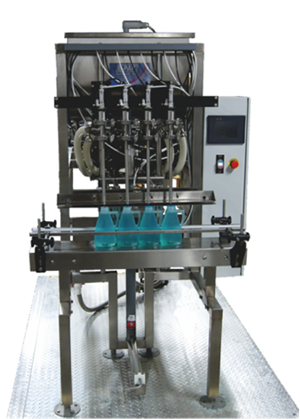 Loading... Please wait...
Loading... Please wait...Electrical Parts Used in Liquid Filling Systems
Posted by Krys Beal on 1st Apr 2019

In order to run, liquid filling machines rely on many different electrical components. The electrical parts that liquid filling equipment uses include timers and counters, motors and drives, PLCs, HMIs, controllers, and power supplies. If any of these parts don't function the way they should, the packaging line will be inefficient, which is why operators should understand the different electrical parts their systems require.
Timers and Counters for Liquid Filling Systems
Some of the important electrical parts a liquid filling machine requires include effective timers and counters , which help operators determine the running time of the machine, as well as how many units have been filled. Without functioning timers and counters, a packaging line may suffer from inefficiency without operators being aware of it.
Motors and Drivers for Liquid Packaging Equipment
Liquid filling machines depend on motors and drives in order to run. If these parts don't run the way they should, they can slow the entire packaging line down. Packaging line operators should make sure each motor and drive is operating at its full potential, or else packaging lines will experience a lack of efficiency.
Liquid Filling Machine PLCs, HMIs, and Controllers
Programmable logic controllers (PLCs), human-machine interfaces (HMIs), and controllers are used to help liquid packaging line operators setup and control liquid filling, capping and labeling machinery. If these aren't working the way they need to, they could present a severe problem for operators and subsequently overall packaging line efficiency. Controllers and interfaces should run efficiently and with few errors, or else operators should consider replacing them before they become a bigger problem.
Why Use a Volumetric Piston Filler?
Volumetric piston fillers are based on a self-priming cylinder, with a piston inside the cylinder that moves. The stroke length and diameter of the piston determines the filling volume, so the desired quantity of liquid filled is determined by volume (instead of weight, for example). This means that you can preprogram the machine and set it up to fill a custom amount into each container. Thus, the fill level on these containers will all be uniform, which is ideal for quality control as well as aesthetics. This leads to less product wasted and more time saved from having to alter containers once they’ve been filled.
Liquid Packaging Equipment Power Supplies
Liquid filling machines rely on sufficient power to run at optimal efficiency, with fully functional power supplies . If a packaging machine's power supply isn't running at its full potential, operators should be able to detect a lack of efficiency and determine if the unit should be replaced.
Other electrical parts for liquid filling lines include brackets, relays, contactors, overloads, sensors, switches and pots.
Packaging line operators should routinely check each electrical part to make sure it's running the way it's intended, and determine if a specific machine is responsible for a fall in efficiency. With one malfunctioning electrical part an entire packaging line can suffer from avoidable downtime. If you would like more detailed information about specific electrical parts for liquid filling machines, contact E-PAK Machinery today, and shop for replacement parts if you need them.

